God is the English name of the Christian deity. Christianity, with its roots in Judaism, is a monotheistic religion based on scripture and the life of Jesus. God as the Supreme Being and Creator of the universe is central to Christian belief. So to some Christians, the title of this chapter, “Origin of God,” may be offensive. How could God, who is eternal—without beginning or end, have an origin? However, our intention is not to offend but rather to offer another view. Here we consider God historically, as having arisen from among a group of ancient deities.
A deity is generally defined as a god or goddess, and secondarily, deity is a theological term referring to the state of being divine, the godhead. In his book, Encyclopedia of Gods, author Michael Jordan lists 2,500 deities of the world. He estimates that the world total including lesser deities to be in excess of 20,000. In this context, the Christian God is but one of many deities.
Note: BCE stands for Before the Common Era, that is, before the birth of Jesus of Nazareth, and CE stands for Common Era, which began with the birth of Jesus. The biblical scripture is from the New Revised Standard Version (NRSV).
In this chapter, we discuss Christianity’s place among the major religions of today’s world and several aspects of the origin of the Christian conception of God. The sections are as follows:
- Religion in the Modern World
- Origins of Religion
- Yahweh and Associated Deities
- Countless Deities and Demons
- Who Represents the One True God?
- God as Love
Religion in the Modern World
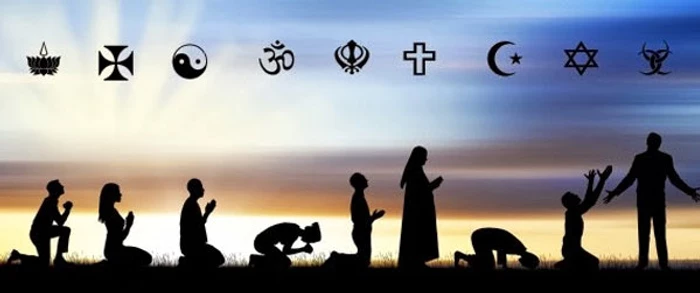
This chapter focuses on the origins of the Christian God; however, it is significant to consider Christianity’s place among the major religions of today’s world. Vast diversity is evident among them. Denominations and religions have sprung forth from new perceptions about existing deities or from emergent ideas about a new deity or deities.
Today’s Major Religions in Descending Order by Size:
Christianity

Christianity is a monotheistic (one God) religion. Christianity has anthropomorphized or projected human qualities onto the Source of Creation, which is a false teaching. Christianity had its beginnings in Judaism and the life and teachings of a Jew who lived in the town of Nazareth (now northern Israel) during the first century CE. Today he is known as Jesus Christ, but his original name was Jeshua ben Joseph, or Jesus son of Joseph (his father). Christianity has inherited much of its biblical tradition from the Hebrew Bible, with its emphasis on Abraham as the founder of Judaism. Because Christians believe in the patriarch Abraham of the Hebrew Bible, Christianity can be described as an Abrahamic monotheistic religion. Christianity is the largest religion in the world. About 2.4 billion people identify as Christians, representing a third of the world’s population. In Christianity, each language typically has its own word for the supreme being; for example, the Latin name is Deus, the Greek name is Theos, and the German word is Gott.
Islam

Islam, which is the religion of Muslims, is also an Abrahamic monotheistic religion. About 1.9 billion people identify as Muslim. The deity of Islam is Allah.
Hinduism

Hinduism is the primary religion of India. About 1.2 billion people identify as Hindu. Hinduism includes the worship of a principal, supreme god, Brahman, while accommodating the worship of different gods with equal validation.
Buddhism

Buddhism has its largest concentration in Eurasia and Asia. About 0.5 billion people identify as Buddhist. Buddhism is unusual in that it lacks a supreme creator deity.
Other Religions
Among the mid-size religions are Shinto, Taoism, and Sikhism, followed by Judaism. Judaism, whose deity is Yahweh (YHWH), is the original Abrahamic monotheistic religion.
As we have shown here, it is evident that the deity of Christianity known as God is one among countless deities. Perhaps, when one realizes the magnitude of the number of deities, it is easier to understand that they have been made up mostly from preconceived ideas, false beliefs and mistruths.
Christianity in Today’s World

Belief in God is very personal. Individuals often create their personalized version of God according to their individual experiences and their perceptions of what they are willing to accept at any given moment. This personal approach to God is strong in Christianity, so much so that today there are 45,000 Christian denominations globally according to estimates by the Center for the Study of Global Christianity. Each of these denominations promulgates its unique perspective on God and Jesus. The diversity within Christianity is underscored by the fact that there are far more Christian denominations in the modern world than there are distinct religions, which number about 4,000.
Origins of Religion
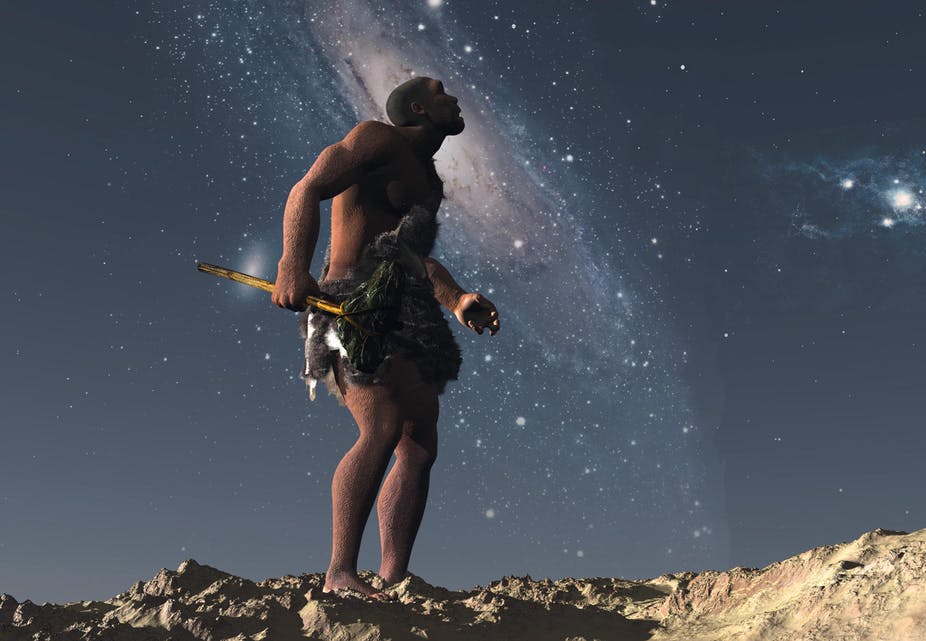
Here we will provide a very brief thumbnail sketch of how the perceptions of divinity and religion originated. The question of the origin of religion has yet to be resolved by experts in the history of religion. It is widely held that spirituality has been a part of humanity for at least 60,000 years. Archaeological finds at older burial sites in the Paleolithic period hint at an even earlier development of religious feeling.
Evidence of regular funeral customs and rituals in the European Mesolithic and the early Neolithic of Asia Minor indicate an increasing care for the dead. It’s possible that these customs and rituals were closely tied to a belief in the afterlife.
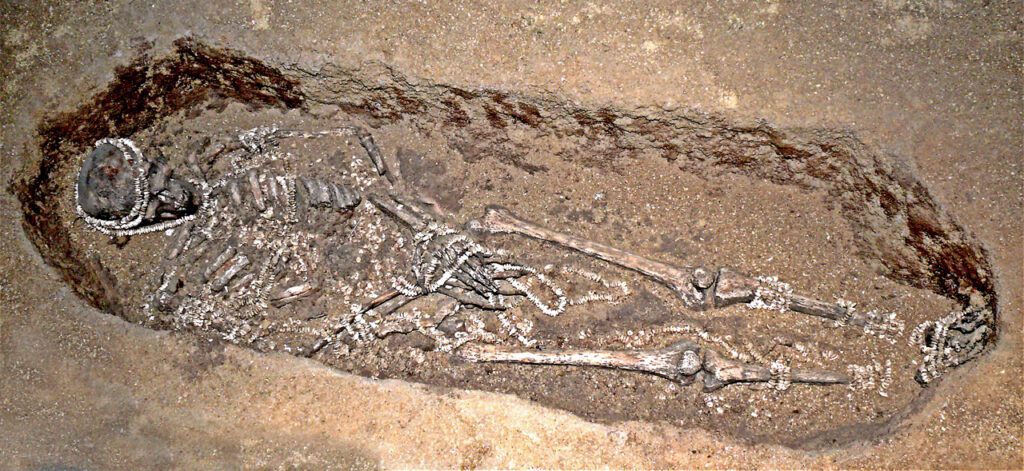
Note: In the Mediterranean Region, the Paleolithic period (Old Stone Age) extended from the beginning of human habitation until circa 18,000 BCE, when the Mesolithic period began. The Mesolithic period marked the end of hunter gatherer cultures in the region. The Neolithic began circa 9,000 BCE with the advent of farming and the use of domesticated animals. The Bronze Age began circa 4500 BCE during the development of Sumer, one of the first civilizations in the world.
Hunting and gathering were prime activities of early humans, beginning some 1.8 million years ago. It is certain that deities of the hunt have existed for many millennia. However, the first written record is from ancient Sumer early in the third millennium BCE. Considered the cradle of Western civilization, Sumer was located in the southernmost part of Mesopotamia in what today is called the Middle East.
Today, the Greek goddess Artemis (twin sister to Apollo) and the similar Roman goddess Diana are among the best-known deities of animals and hunting.
Yahweh and Associated Deities

Our focus now shifts to the land of Canaan, the Promised Land of the Bible. Canaan which is located in the Levant region of present-day Lebanon, Syria, Jordan, and Israel. Most of the origin of Yahweh (YHWH), who became the national deity of ancient Israel, occurred in this area. According to biblical scholar Mark S. Smith, author of The Early History of God: Yahweh and the Other Deities in Ancient Israel, archaeological findings suggests that, “the Israelite culture largely overlapped and derived from Canaanite culture…In short, Israelite culture was largely Canaanite in nature.”
Canaan was populated by Semites who called their land Canaan as early as the mid-third millennium BCE. The Canaanite religion arose from ancient Semitic religions that were influenced by religious practices from Mesopotamia and Egypt. The Canaanites worshipped as many gods as they pleased, and their pantheon offered them over 50 deities to choose from. Canaanite deities seemingly controlled everything that was relevant to peoples’ lives. This included war, hunting, love, crop fertility, weather, fire, moon, sun, sea, orchards, dance, healing, marriage, pregnancy, and on and on. These deities were in a four-tier hierarchy headed by the supreme sky-god El and the goddess Asherah. Animals were killed and burned as offerings in order to appease or gain favor with the deities.
Early Israelites worshipped some of the Canaanite gods, such as El and Asherah. Yahweh, however, was not a Canaanite god. The earliest biblical version of Yahweh appears in the Late Bronze Age (1550-1150 BCE). He was worshipped as a storm and-warrior god of nomadic tribes who helped the Israelites in battle. A number of hypotheses exist about the origin of Yahweh, though there is no consensus.
However, a recent theory that is gaining traction has been proposed by the scholar Nissim Amzallag, of Ben-Gurion University, Israel. Amzallag presents compelling evidence from the ancient copper mines in the Timna Valley in southern Israel that Yahweh was originally a patron of metallurgists and was the deity of the forge in the Bronze Age (ca. 3500-1200 BCE). Amzallag points to similarities between
Yahweh and other gods of metallurgy, citing both biblical and extra-biblical passages.

In 1957, a group of archaeologists excavated a site in the ancient city of Soleb in Nubia, in present-day Sudan. In the ruins at the base of a temple built by Amenhotep III (ca. 1386-1353 BCE), they discovered a reference to a group of people described as “Shasu of Yahweh.” This reference established that people other than the Israelites worshipped Yahweh.
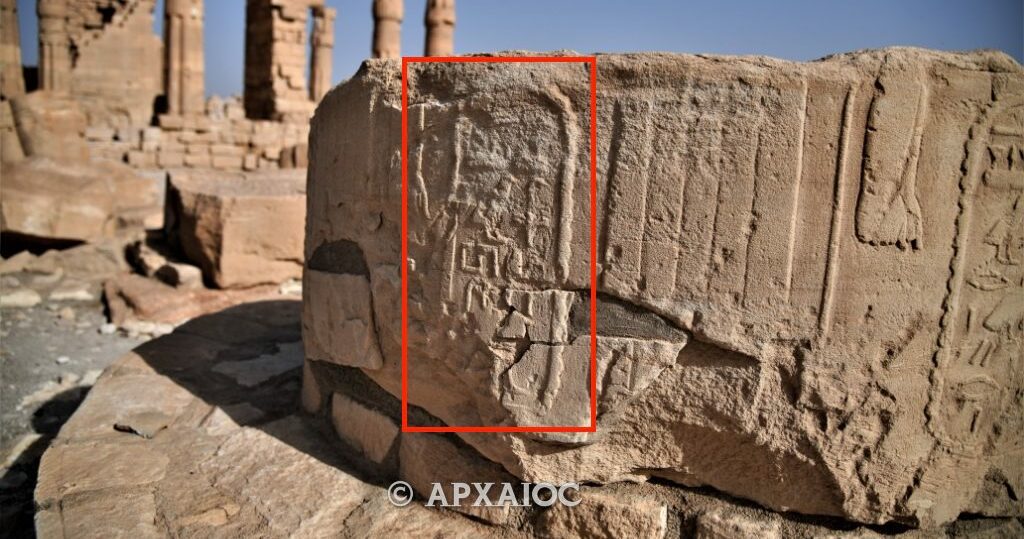
Thomas Romer, in his The Invention of God states that Exodus 3:
“…suggests that Yahweh was worshipped first in Midian and probably also in Edom… The very fact that the biblical god originally had a proper name, Yahu, Yaho, or Yahweh, indicates that he was not originally understood to be the one and only God, but merely one god among others who were worshipped by various peoples in the Near East.”
He also states that a stele (monument) of the Moabite king Mesha proves the existence of safe haven sanctuaries allotted to Yahweh in Moabite territories annexed by Israel.

As mentioned above, in addition to Yahweh, the early Israelites worshipped a variety of Canaanite gods and goddesses, including El, Asherah, and Baal. According to The Oxford Companion to World Mythology:
“It seems almost certain that the God of the Jews evolved gradually from the Canaanite El, who was in all likelihood the “God of Abraham”… If El was the high God of Abraham—Elohim, the prototype of Yahweh—Asherah was his wife, and there are archaeological indications that she was perceived as such before she was in effect “divorced” in the context of emerging Judaism of the 7th century BCE.” (See 2 Kings 23:15.)

Yahweh as a Monolatrous Deity
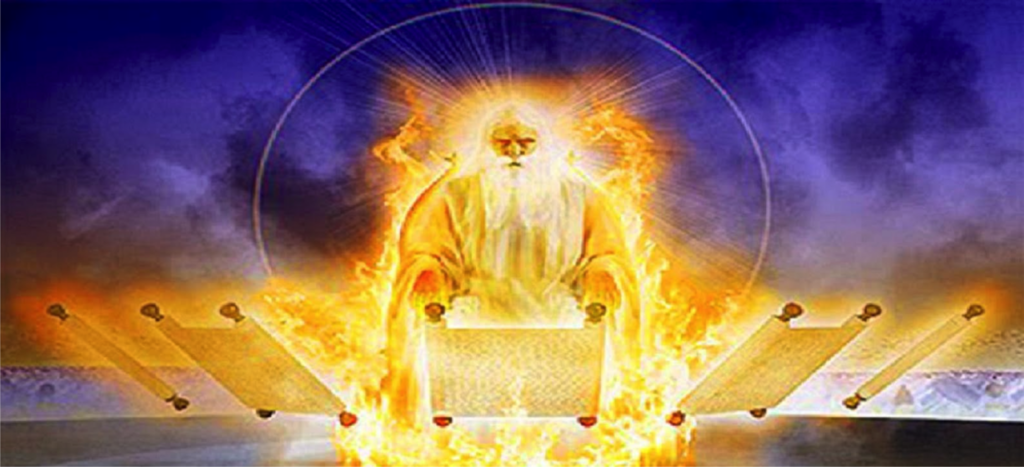
Monolatry is the belief in the existence of many deities, but with the consistent worship of only one. As noted above, the archaeological findings at the ancient city of Soleb and the Moabite territories established that non-Israelites worshipped Yahweh as one of their gods. However, only the Israelites made Yahweh their favorite deity.
As evidence of Monolatry, some biblical scholars cite Exodus 20:3, in which Yahweh says,
“You shall have no other gods before me.”
Yahweh is not saying that you should not worship other gods, only that he was the principal god, meaning that no other god is superior or equal to him.
There is abundant evidence, much of it from the Bible itself, that before the Babylonian Exile, many Israelites worshipped other gods and idols, rather than Yahweh. According to Mark S. Smith, “In early Israel, the cult of Yahweh generally held sway. However, this statement does not characterize pre-exilic Israel religion as a whole. Rather, Israelite religion apparently included worship of Yahweh, El, Ashera, and Baal.” As mentioned above, some biblical scholars believe that at one time Asherah was worshipped as Yahweh’s wife. Archaeologist William Dever in his book Did God Have a Wife? affirms that Asherah functioned as a goddess and was Yahweh’s wife based on archaeological evidence.
The religious scope of early Israel changed due to two major developments:
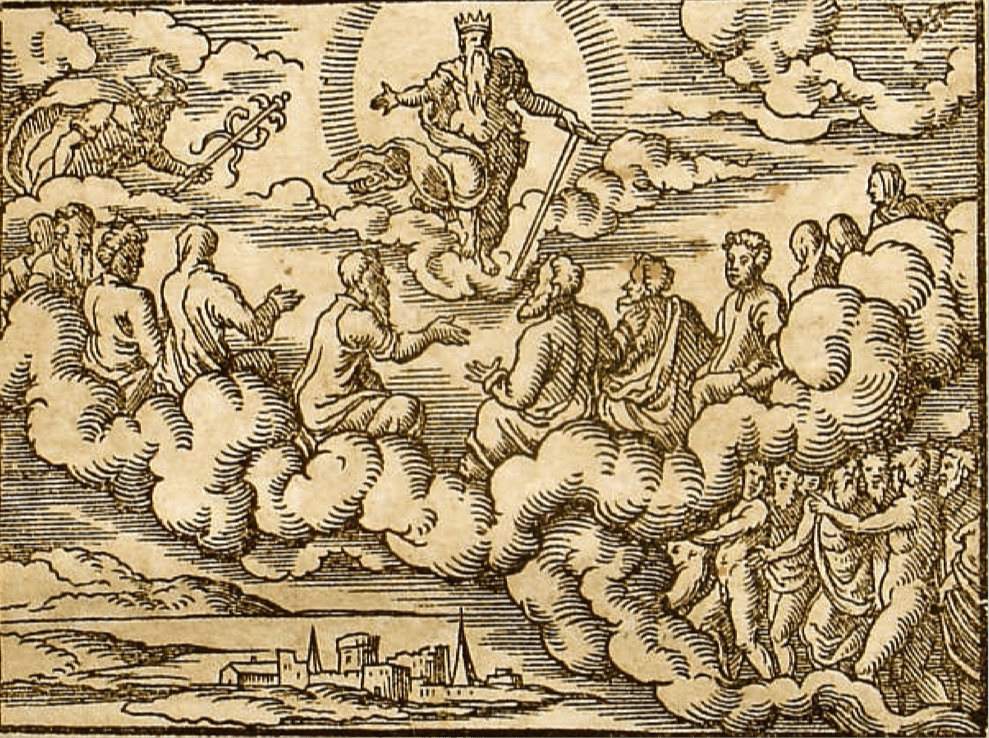
Convergence
According to Smith, “Convergence involved the coalescence of various deities and/or some of their features into the figure of Yahweh. This development began in the period of the Judges and continued during the first half of the monarchy. At this point, El and Yahweh were identified, and perhaps Asherah no longer continued as an identifiably separate deity. Features of El, Asherah, and Baal were absorbed into the Yahwistic religion of Israel.” [italics for emphasis]
Differentiation
The second major development was the differentiation of the early Israelite cult from its “Canaanite” heritage. This began with the Israelites rejecting the worship of Baal, beginning in the ninth century BCE. Differentiation continued through the 6th century with prophetic and legal condemnations of Baal and Asherah worship.
According to Smith, “The two major developments of convergence and differentiation shaped the contours of the distinct monotheism that Israel practiced and defined in the Exile (ca.587-538) following the final days of the Judean monarchy.”
Yahweh as a Monotheistic Deity

In 612 BCE, the Babylonians claimed the region of Canaan. In circa 587 BCE, they invaded Judah, sacked Jerusalem, destroyed the temple of Solomon, and exiled many of the Israelites to Babylonia. During the Babylonian captivity, Yahweh emerged as the only god of the Jews—a monotheistic deity.
The Israelite leaders and priests feared that with their temple destroyed and their people forcibly exiled, they would be absorbed into the Canaanite’s polytheistic religion, losing their identity as the people of Israel. As it was, many Israelites already worshipped Canaanite gods and goddesses. As explained above, the Israelite leaders had previously taken measures toward convergence and differentiation that began to separate their culture and religion from that of Canaan. But their resolve was intensified because of the Exile.
To preserve the uniqueness of their culture, the Israelite leaders set about creating a new image for their god Yahweh. To demonstrate this reimagining of Yahweh, we look here at Deuteronomy, the fifth book of the Torah. The earliest rendition of Deuteronomy was written in the 7th century BCE.

The early Deuteronomic writers conceived of Yahweh as monolatrous. Later, in the mid-6th century in Babylonia, the Priestly writers revised Deuteronomy to describe Yahweh in monotheistic terms. The Priestly writers are so called because they were priests of the Judean lineage, from which Judaism arose. These Priestly writers seemingly saw this as an essential step in helping the Israelites bond together in a cohesive identity.
In addition to wanting their people to worship only Yahweh, these Priestly writers wanted to turn them against other gods. To further unite the Israelites, they wrote through the voice of Yahweh, commanding the Israelites to destroy their enemies, forbidding them to intermarry with non-Israelites, and commanding them to
destroy any Israelite that would ever intermarry. Yahweh further commanded them to destroy the temples and images of competing gods. Lastly, to make them feel special and distinct from non-Israelites, Yahweh claims that they are his chosen people.
Here is the message from the Priestly writers speaking as the new version of their god, Yahweh, in Deuteronomy 7:1-6:
“When the Lord your God brings you into the land that you are about to enter and occupy, and he clears away many nations before you—the Hittites, the Girgashites, the Amorites, the Canaanites, the Perizzites, the Hivites, and the Jebusites, seven nations mightier and more numerous than you—and when the Lord your God gives them over to you, and you defeat them, then you must utterly destroy them. Make no covenant with them and show them no mercy. Do not intermarry with them, giving your daughters to their sons or taking their daughters for your sons, for that would turn away your children from following me, to serve other gods. Then the anger of the Lord would be kindled against you, and he would destroy you quickly. But this is how you must deal with them: break down their altars, smash their pillars, hew down their sacred poles, and burn their idols with fire. For you are a people holy to the Lord your God; the Lord, your God, has chosen you out of all the peoples on earth to be his people, his treasured possession. (Deuteronomy 7:1-6 )” [italics for emphasis]
And so, the Jews became God’s chosen people.
Yahweh may have become monotheistic, but he certainly does not appear to have shed his storm-and-warrior-god persona as a god of destruction and wrath. We would hope that the Priestly writers wanted the best for their people, but this is an example of achieving social control by using xenophobia and false information to manipulate people.
Yahweh as God
Monotheism as written in the Hebrew Scriptures would eventually be adapted by the adherents of Christianity. They would continue to worship Yahweh, eventually known as Jehovah and then, simply, as “God”.
It is unlikely that many Christians know that the God that they worship started out as either a storm-and-warrior deity or a forge deity. They probably know that God is monotheistic, but most likely not that he was once monolatrous and that various Canaanite deities and/or some of their features were coalesced into him. This male
god would continue to go through many ongoing permutations in Christianity. At one point in 325 CE, he became one God that exists eternally as three equal and distinctive persons—the Father, the Son, and the Holy Spirit—known as the Holy Trinity.

We now end our ever-so brief glimpse of the origin of God. If you would like a detailed account of this subject that continues to nearly present-day America and Europe, we suggest that you read A History of God, a New York Times bestseller, by Karen Armstrong.
Countless Deities and Demons
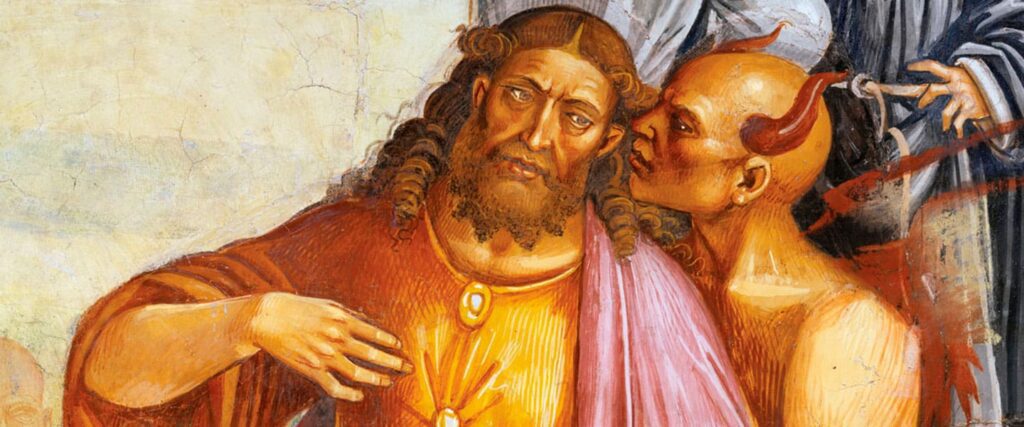
Deities weren’t the only beings created from the fertile imagination of human beings. There are nearly 3,000 diabolical personalities listed in Theresa Bane’s Encyclopedia of Demons in World Religions and Cultures. Prominent in Christianity are Lucifer, Satan, the Antichrist, and the devil.
The New Testament mentions both the devil and demons. In the gospels of Matthew, Mark and Luke, Jesus is said to have been tempted three times by the devil. The New Testament also contains several dozen verses about Jesus casting out demons. There is even a number that has entered the lexicon of demons. “The number of the beast,” Book of Revelation 13:17–18, asserts 666 to be “the number of a person.” Chri
Who Represents the One True God?
“And this is life eternal, that they may know thee the only true God…” (John 17:3)
A central tenet of Christianity is that theirs is the only one, true God. However, the fact that there are 45,000 Christian denominations globally helps one realize that every Christian’s perception of God is based on the teaching of a particular denomination, a particular pastor or priest, and so on.
Furthermore, it’s impossible to know how many of the people worshiping one of the many deities that still exist today claim it to be the one true deity. Everyone’s perception of God is based on a unique combination of genetics, family, education, religion, culture, environment, life experiences, and other factors. Just as every person on the planet is unique, so each person’s belief or non-belief in God is unique.
Can there really be one true God when every person’s belief is unique to him or her? Can any religion represent the sole Source of Creation or represent Jesus? No. No religion can be God’s or Jesus’ representative with any validity.
God as Love

For humanity to live in peace, we must reject all the outdated “truths” of religion. It’s easy to see that much of the suffering in the world is due to misguided beliefs. Naturally, whatever is believed on a personal level feels true. However, that feeling can be misleading. Life’s experiences could become more freeing and enlightening if people would take a closer look at what they call God. If anything about one’s perception of God causes fear, unworthiness, shame, guilt, or even superiority, in any way, perhaps now is the time to question one’s belief.

If Christians would choose one biblical passage, disregarding all the rest, and if they chose 1 John 4:7-8, they and the world would be transformed:
“Beloved, let us love one another because love is from God; everyone who loves is born of God and knows God. Whoever does not love does not know God, for God is love.” (1 John 4:7-8)

